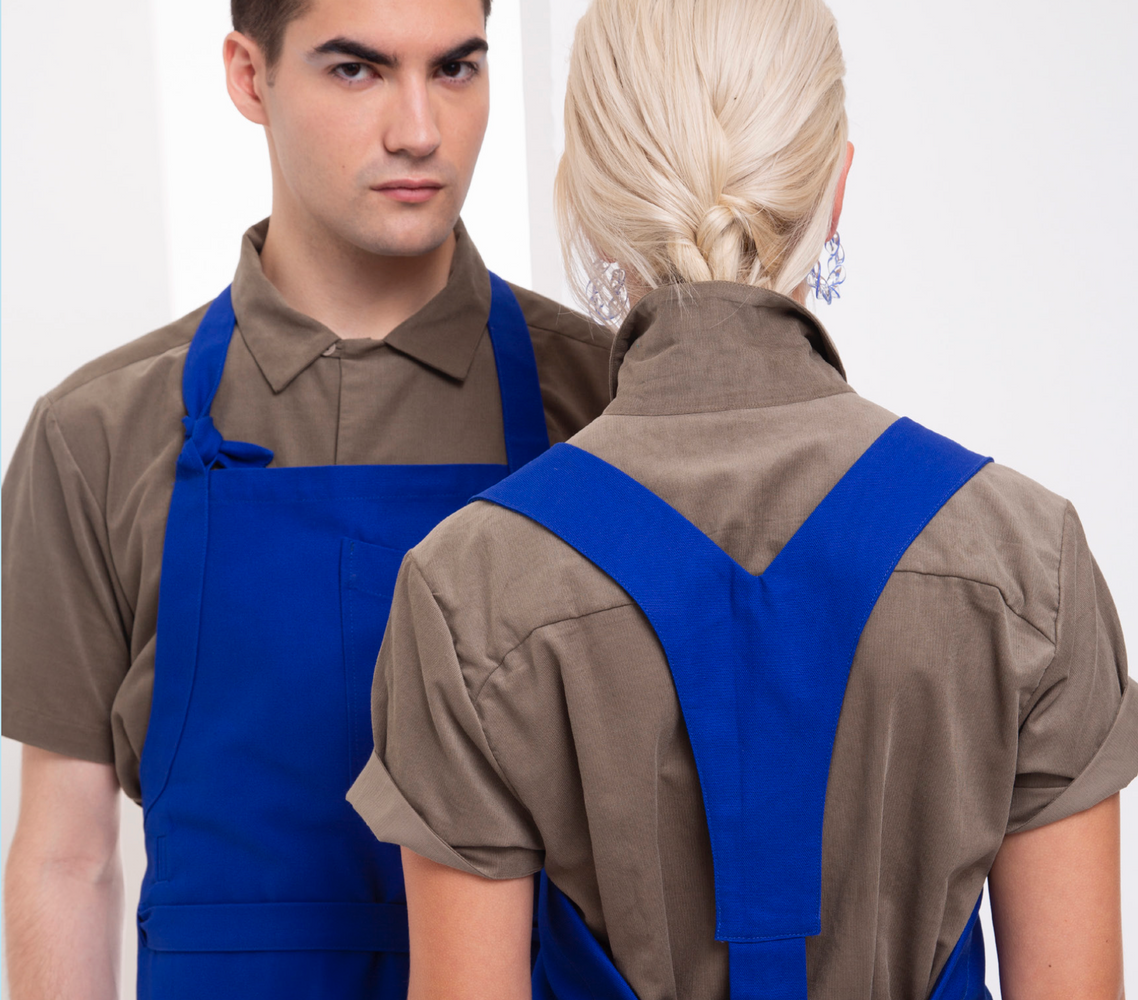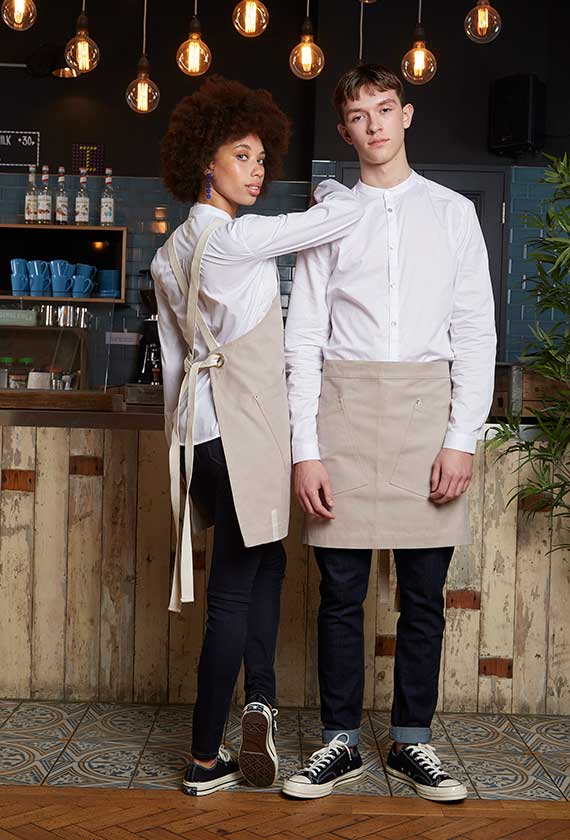The apron; from workwear to fashion.

Aprons have been around for centuries, and their history is fascinating. What started as a practical garment worn for protection in the workplace has now evolved into a fashion accessory, with a range of styles and designs to choose from.
The earliest aprons were simple garments made from animal skins and worn by our prehistoric ancestors. In the Middle Ages, aprons became more common and were made from leather or canvas. They were worn by tradespeople such as blacksmiths, carpenters, and butchers, to protect their clothing from dirt and damage while working.
During the Industrial Revolution, aprons became more widespread as more people started working in factories. These aprons were typically made from heavy-duty materials like denim or canvas and were often worn by women in textile factories to protect their clothing from machinery.
In the 20th century, aprons continued to be an essential item of workwear. In the 1940s and 50s, women wore aprons in the kitchen as part of their domestic duties, with the aprons often featuring fun and colourful designs.
However, as more women entered the workforce, aprons began to fall out of favour as a symbol of domesticity. Instead, they became a fashion accessory, with designers and fashion houses creating aprons that were both functional and stylish.
Today, aprons are still used in the workplace, but they have also become a popular fashion item. From classic bib aprons to waist aprons, there is an apron for every occasion and style.
One popular style of apron is the chef's apron. These aprons are typically made from lightweight materials like cotton or polyester and are designed to protect the chef's clothing while also being comfortable to wear. Chef's aprons come in a range of colours and designs, from classic white to bold and bright prints.
Another popular style is the waist apron, which is often worn by waitstaff in restaurants and cafes. These aprons are usually shorter than chef's aprons and tie around the waist, leaving the arms free to move. Waist aprons can be plain or patterned, and many restaurants choose to customise them with their logo or branding.
In recent years, aprons have even made their way onto the runway. Designers have created apron-inspired dresses and skirts, with layers of fabric that resemble a traditional apron.
The history of the apron is a fascinating one. From its humble beginnings as a practical work garment to its current status as a fashion accessory, the apron has evolved and adapted to meet the changing needs of society.
Whether you're a chef, a waiter, a crafter, or a fashionista, there's an apron out there for you.

